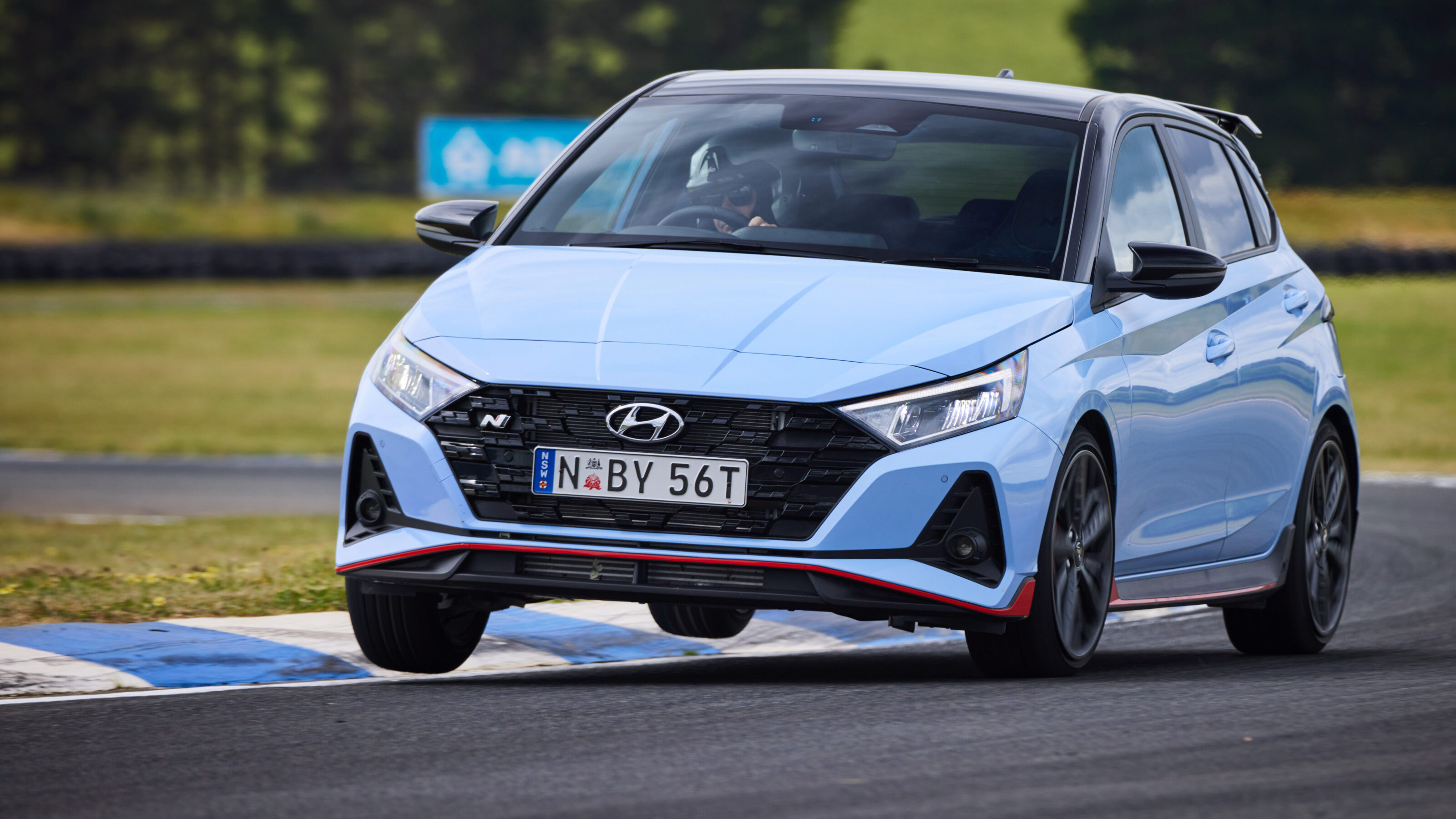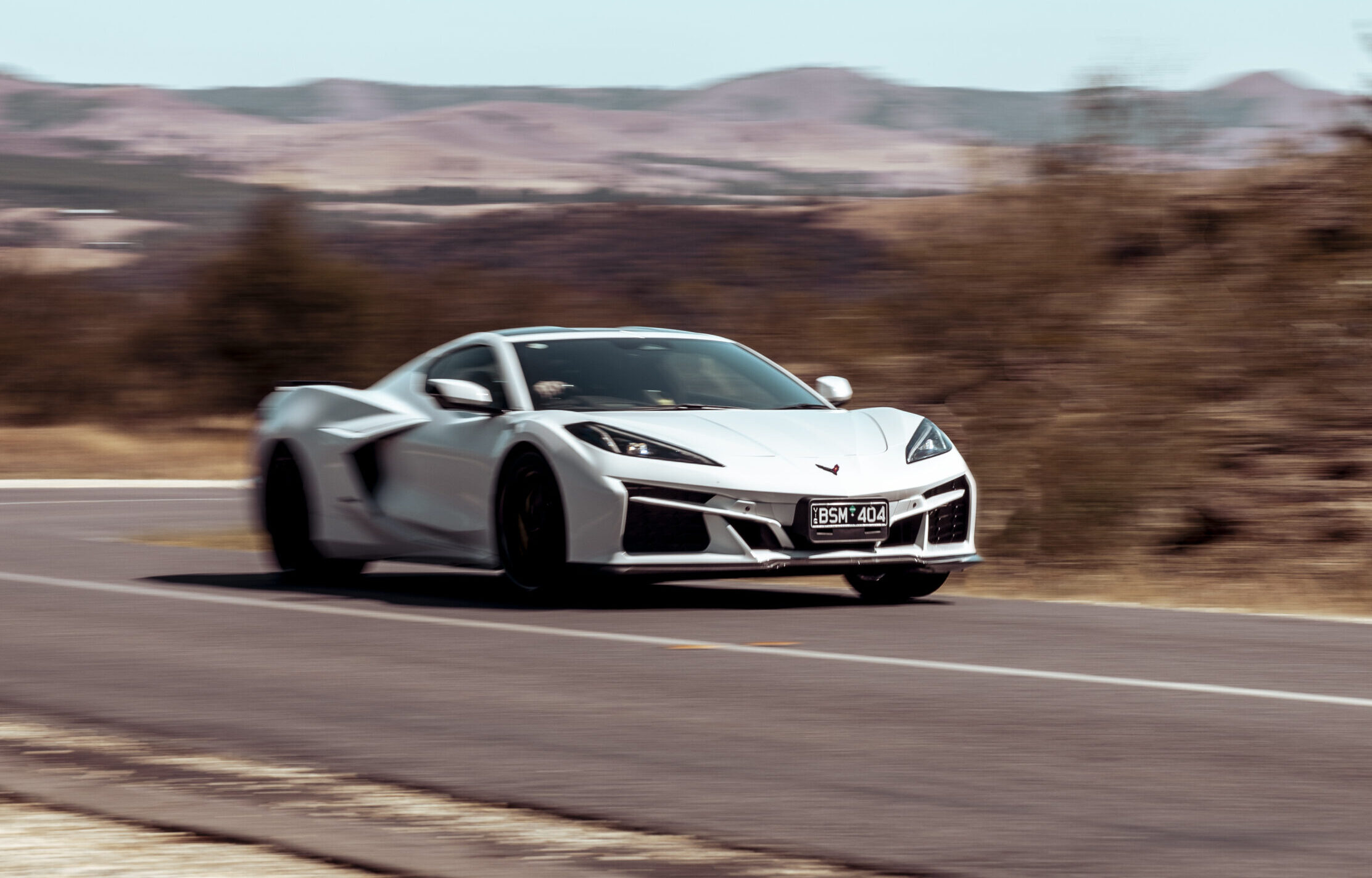Things we like
- Affordable price
- Everyday useability
- Dynamic excellence
Not so much
- Road and wind noise
- No radar cruise
Being a modern motoring enthusiast is a lesson in pessimism – or so the naysayers will claim. Cars are too expensive, they shout. Automatics are taking over, they bemoan. The larrikin spirit is dead, they declare. To hell with all of that, says Hyundai.
The Korean company has finally unleashed its i20 N in Australia, and after spending two days in the pint-sized rocket on both road and track, we can emphatically confirm it is as engaging, rewarding, spirited and quick as any car lover could ever want.
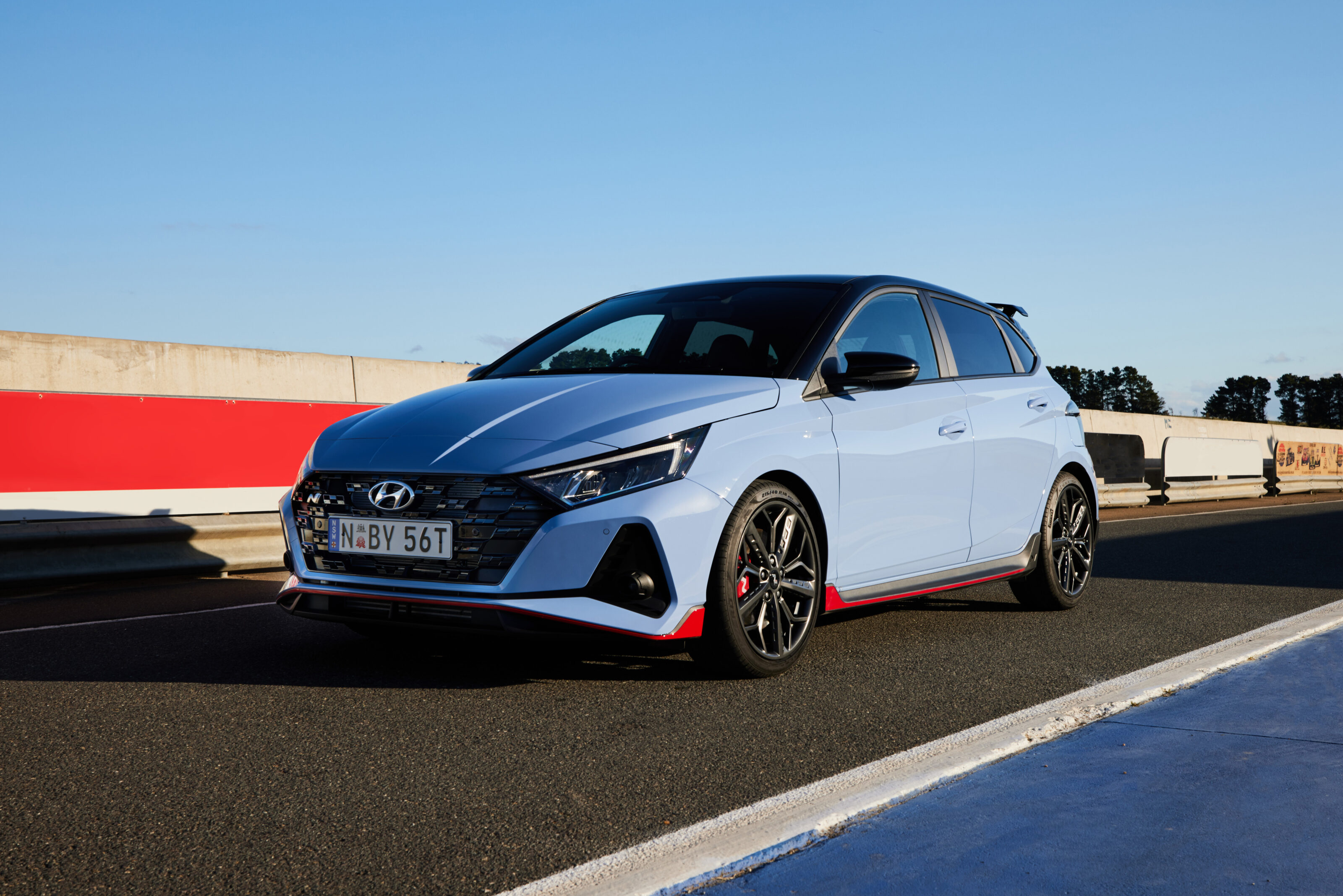
For those that are disappointed in the increasing inaccessibility of modern performance cars, the i20 N is a financial breath of fresh air. Just a single variant is available, priced at $32,490.
While that is a $200 premium over its key rival – the Ford Fiesta ST – the Hyundai is more powerful, lighter, and faster than its Blue Oval nemesis on paper. We’ll reserve an official verdict until we can compare the pair head-to-head. Watch this space.
Powering the i20 N is Hyundai’s turbocharged Gamma II 1.6-litre T-GDi four-cylinder, producing 150kW and 275Nm. An overboost function is available, with the peak torque figure increasing to 304Nm in the meat of the power band if the conditions are right. Namely, maximum throttle application and appropriate engine temperatures. This tickle of extra shove is signalled to the pilot by a green turbo indicator that illuminates on the 10.25-inch digital instrument cluster. It became a point of great glee to see the symbol when accelerating hard.

Despite the affordable entry point, Hyundai hasn’t skimped on standard equipment in the i20. Along with the digital instrument cluster there is a 10.25-inch infotainment touchscreen which features a wickedly cool Performance Driving Data System (more on that later). Additional standard equipment includes 18-inch alloy wheels, rear privacy glass, leather steering wheel, LED lights, fog lamps, smartphone mirroring, a Bose audio system, button start, and a wireless charging pad. Literally the only options available are premium paint for $495 and a two-tone roof for $1000.
Active safety features include Forward Collision-Avoidance Assist, Lane Follow Assist, Intelligent Speed Limit Assist, and Rear Cross-traffic Collision Warning. There is no radar cruise control, which isn’t a massive loss for performance driving, but it is a spec omission that we’d be happy to see added to the i20 N’s rap sheet.
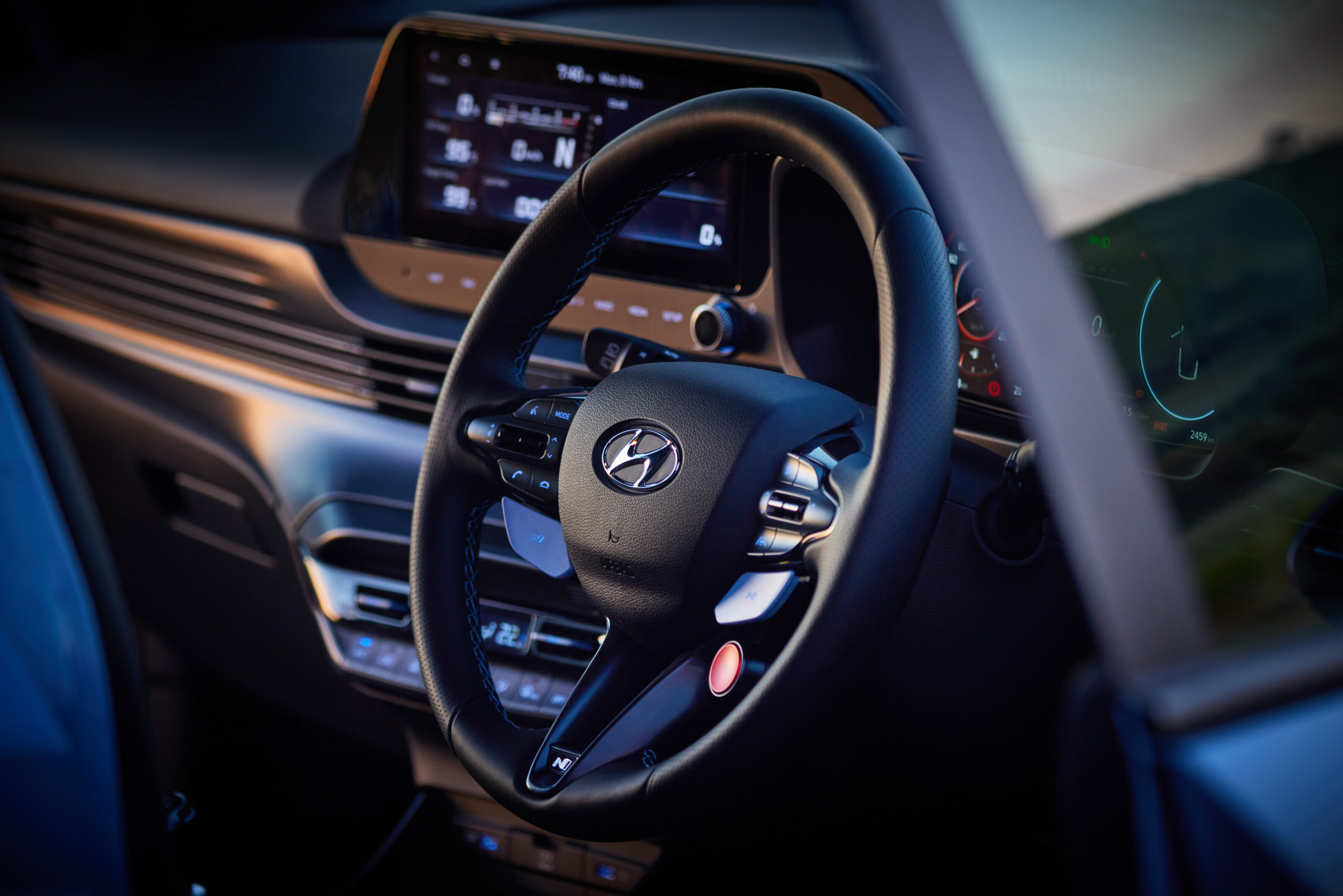
Towering above all of that is the key reason the i20 N should be on every enthusiast’s short list regardless of price – how it drives. In short, it’s an ode to everything that we wish a hot hatch could be. It is liveable day-to-day, playful on your favourite mountain road and surprisingly quick on track.
The engine, while not as vocally active as the 2.0-litre turbo fitted to the i30 N and Kona N, is gutsy and has a whooshing induction note. A six-speed manual is the only transmission available, meaning if you spot an i20 N in the wild you are identifying as ‘one of us’. Behind the wheel is a person who appreciates the art of three-pedal driving. Fitted with a Torsen mechanically locking limited-slip differential, the i20 puts its power down without excessive levels of torque steer. In fact, during our testing we found it to be mostly absent from the driving experience, even when giving the car a caning on track.

There are six drive modes to choose from, with four being the traditional Eco, Normal, Sport and full-fat N. The two remaining modes are customisable, and can be activated by the large N buttons on the steering wheel, while a third rim-mounted button turns the rev-matching system on and off.
The care that Hyundai has put into making the i20 N a compelling driver’s car is most evident in the control weights. The steering is wonderfully weighted and calibrated, with the column-mounted electronic power steering system delivering ample, crisp feedback. The gearshift is positive and slick, with the only real gripe of the six-speed manual being that the gates can be a touch indistinct when passing through the dogleg.
Hyundai has gone to great lengths to ensure the i20’s chassis is up to the task of being a proper performance car. For the N the bodyshell has been reinforced in 12 different places, with a bespoke suspension compared to the ‘regular’ variant that includes stronger top mounts and front knuckles. The end result is a car that feels taught and hunkered down. Its purpose-built vibe isn’t by mistake – Hyundai took the requirements of the N into account when developing the base i20’s chassis.
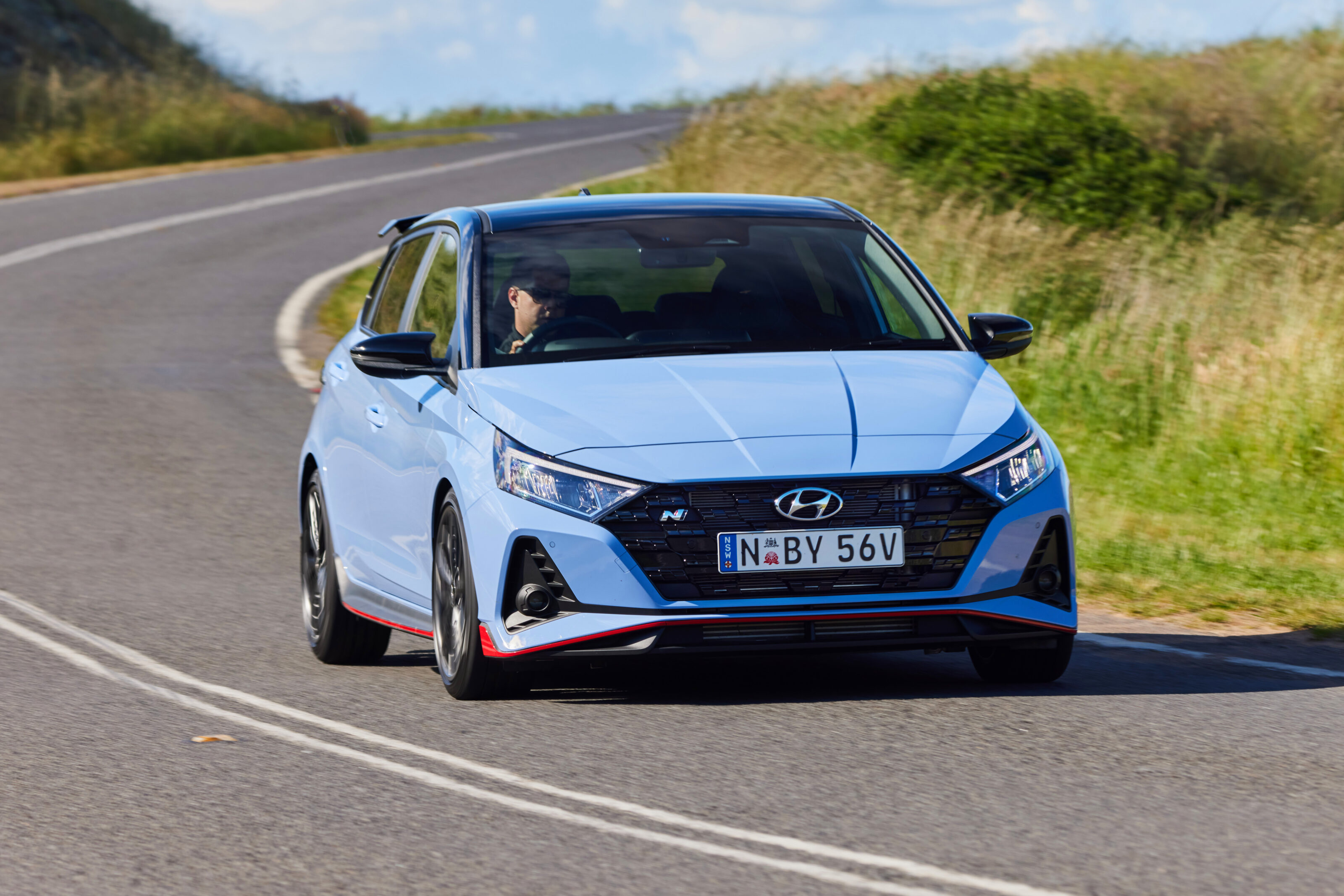
On fast and flowing roads the i20 N demonstrated confidence inspiring high-speed stability of a vehicle with a much larger footprint, while a wheelbase of just over 2.5 metres made it a giant-killer on tight mountain roads. The i20 gets up on its toes and dances eagerly, egging you on to push harder.
Fixed-rate dampers do an impressive job in a range of uses. There’s no denying the ride is firm, but it isn’t crashy or brittle. It could be argued that the urban ride is perhaps on the busier end of the comfort spectrum, but in the context of the car’s purpose and entry price it’s an amenable trait.
On road the i20 N’s worst foible is the intrusion of road and wind noise. You can’t expect S-Class hush in a car of this size, and with a remit as focused as this, but constant roar from the tyres is noticeable and tiring at highway speeds.
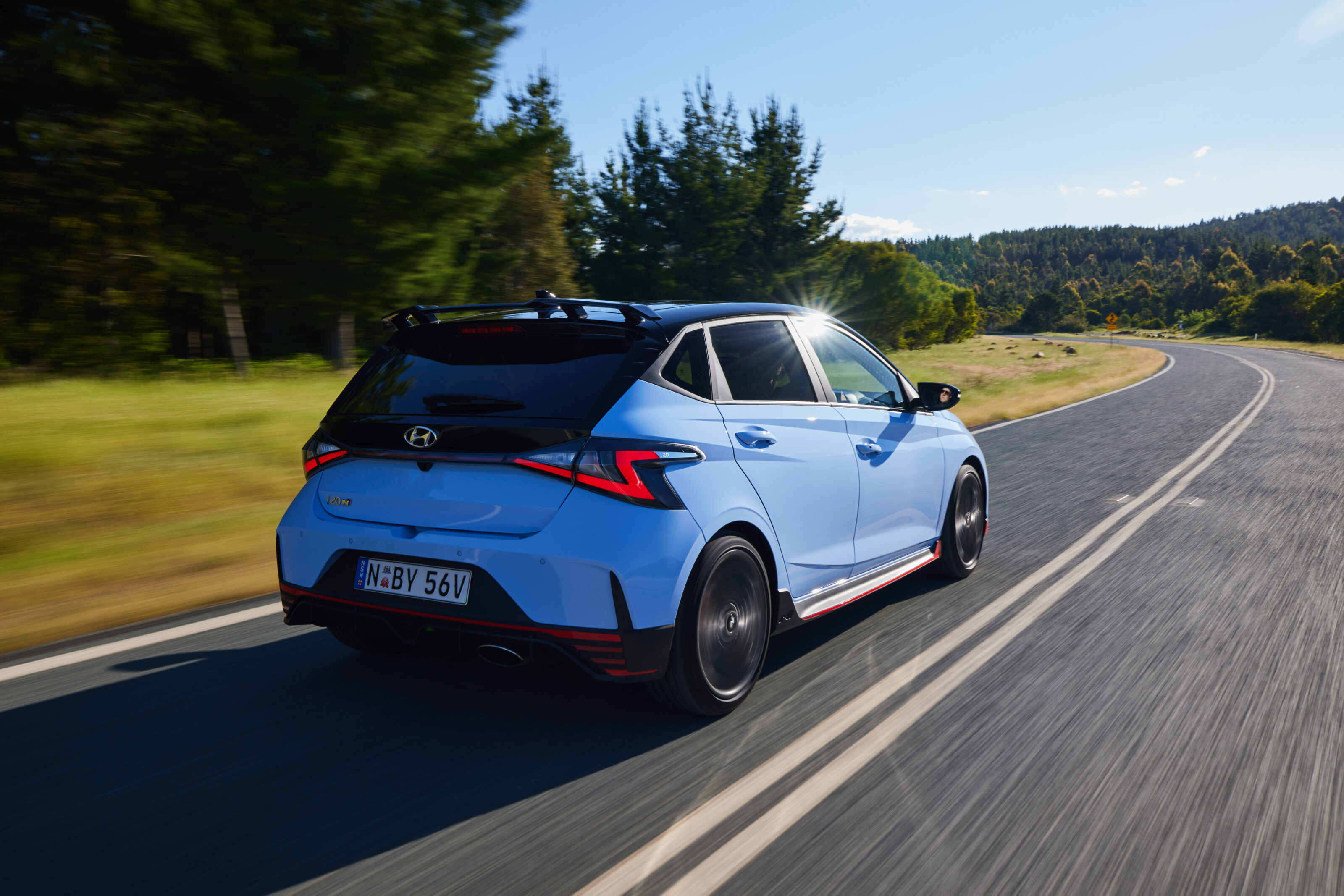
Hyundai once again affirmed that the five-year, unlimited kilometre warranty that the i20 N is offered with includes track driving. Handy, given that every future owner should take their vehicle to the circuit. On a race track the i20 N is an absolute riot. In its sport ESC mode the i20 rotates beautifully on corner entry, with the planted front end diving eagerly toward apexes. Get really silly with it and you will even be able to prompt big lift-off slides should you tire of hunting ultimate lap times.
Large 320mm ventilated front brake discs are capable of taking one hell of a punishing. Only at the end of a lengthy day of track action was the brake pedal starting to transmit indicators of fade. Braking stability was impressive, particularly during heavy applications. Hyundai’s engineers have also designed the system to allow left-foot braking while maintaining throttle applications which is handy when flying through Wakefield’s first kink. With braking performance being one of our major gripes with the Ford Fiesta ST, this middle-pedal salvo from Hyundai is an important one.
Track day enthusiasts will be particularly keen on Hyundai’s new Performance Driving Data System which is fitted as standard. Accessible through the cars infotainment screen, the system includes a lap timer that is linked to the on-board GPS, and will soon be pre-loaded with a slew of local venues.
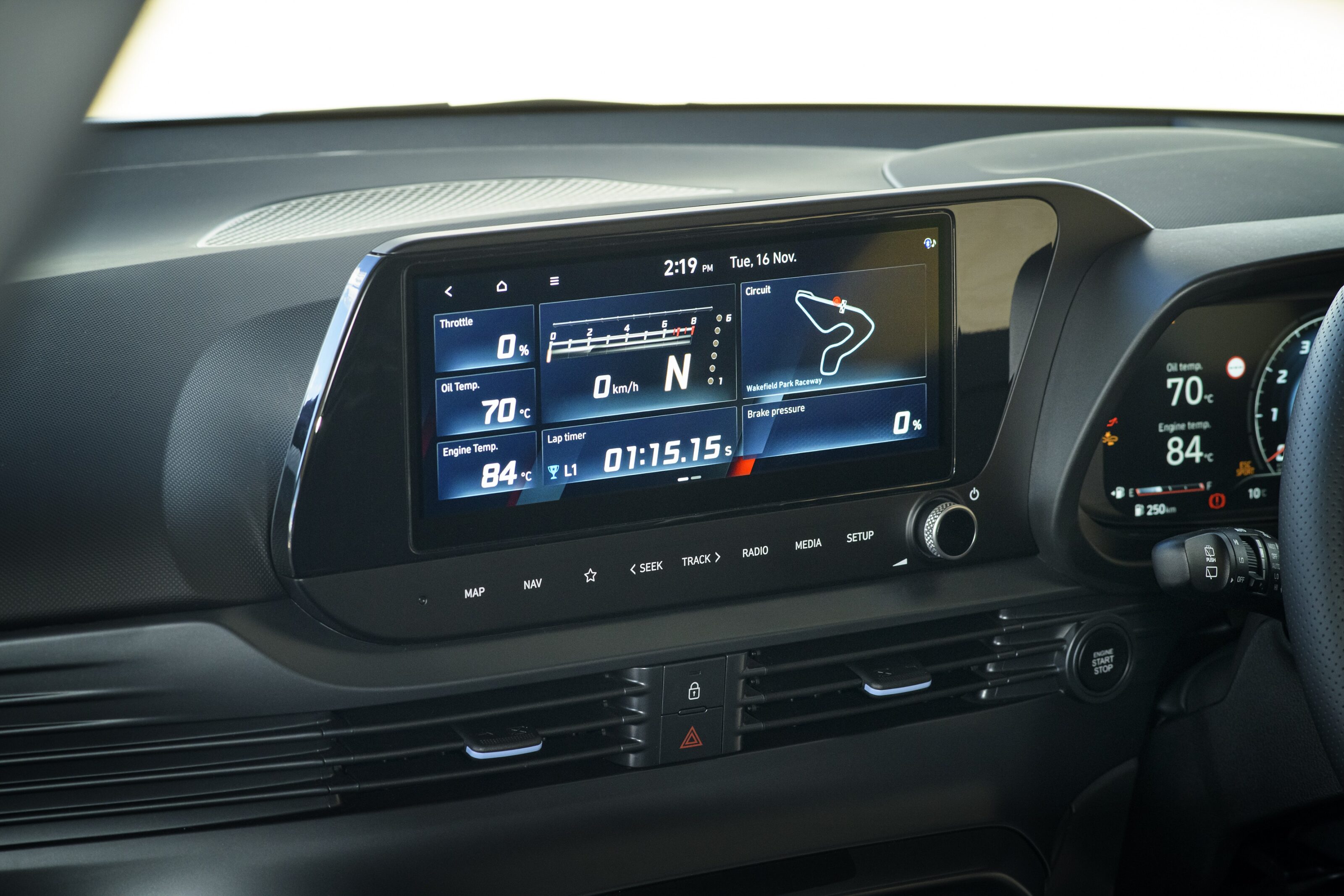
Hyundai didn’t need to build the i20 N. Its raft of SUVs is incredibly popular here and internationally. While Toyota is preaching about the homologation link between its Yaris GR and the WRC racer, the rulebook doesn’t actually require a direct link. The Koreans could have easily kept pumping out pedestrian i20s for overseas markets and never put the time and effort into building a proper performance version. But it did, and it did so with the kind of passion usually reserved for companies that have been doing it for centuries. When you drive the i20 N on a good road, you can feel the enthusiasm of the N division through your fingertips at every corner.
Being a modern motoring enthusiast isn’t all doom and gloom. Not when cars like the i20 N exist.
2022 Hyundai i20 N specs
Things we like
- Affordable price
- Everyday useability
- Dynamic excellence
Not so much
- Road and wind noise
- No radar cruise


